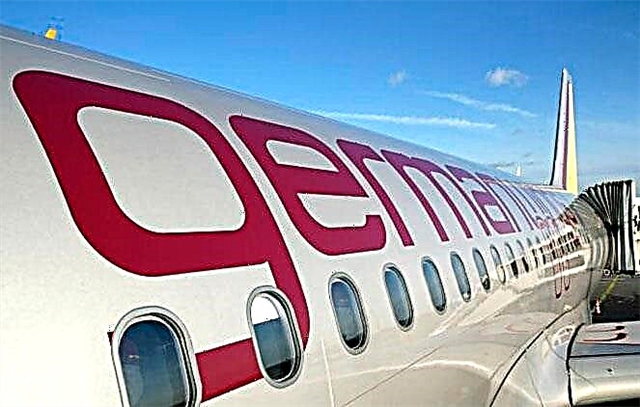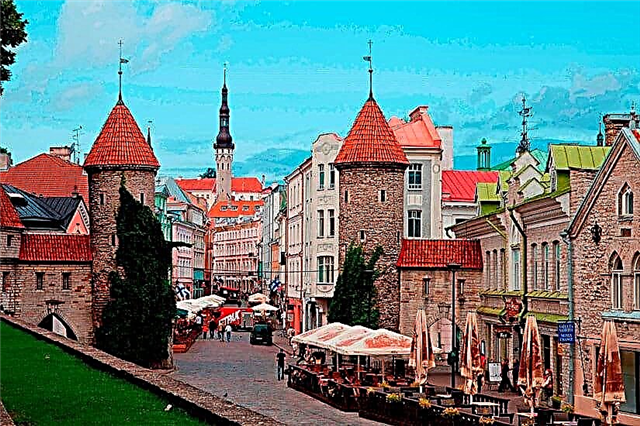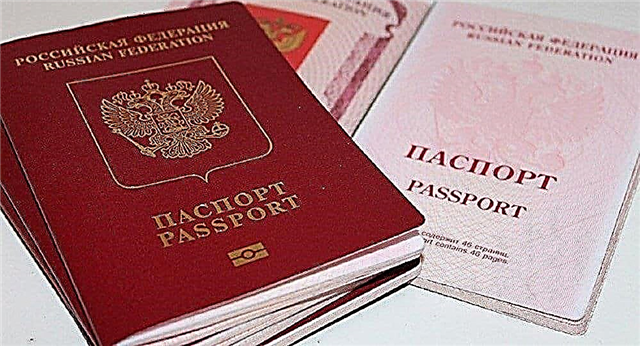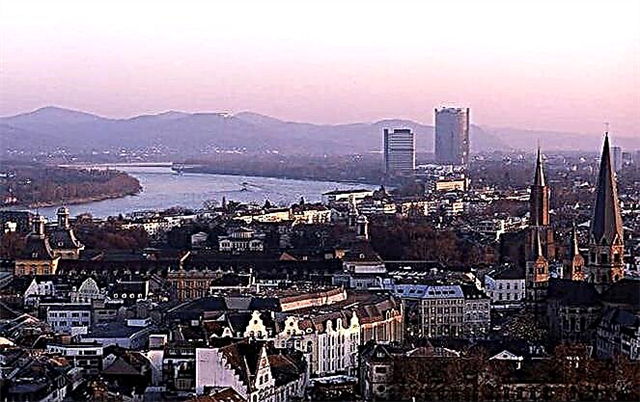The small old town of Bonn has a long history and is located in the western part of Germany on the Rhine River. This cozy medieval town is known as the birthplace of Beethoven and the former capital of Germany. But the temples, cathedrals and mosques in Bonn deserve special attention, the construction of which was carried out in different periods of the 2000-year history of the city. Some of the churches were built on sites that have long been considered sacred.

Temples and cathedrals in Bonn
For Bonn, as for any German city, during the Middle Ages, churches were an integral, important part of life. Today they have also become the main attractions and architectural monuments.
The ancient monastery-Basilica of St. Martin
The famous monastery-Basilica of St. Martin is located on Münsterplatz. It is assumed that more than 2000 years ago, an older Roman shrine existed on the site of the temple (in 1910, an immured stone dedicated to the goddess Diana was found in the altar of the temple).
The basilica was erected on the burial place of two executed (approximately in 235) Roman legionaries, Christian martyrs Cassius and Florenty - the patrons of the city, revered as saints.

As one of the most ancient basilicas in Germany, it was rebuilt several times: in the 6th-7th centuries, the memorial hall was expanded, in 1050 it was completely destroyed and only in the 13th century it acquired its modern appearance. In the same period, it became a symbol of the city and is depicted on the coat of arms of Bonn.
Until 2009, the Basilica of St. Martin acted as a religious center for the believing population, and later the building was handed over to the Benedictines and the temple again became a monastery.
Connoisseurs of medieval architecture will be interested in the unusual style of the basilica building with elements of the Romanesque, Gothic and Baroque styles. The building itself has five towers of different heights and shapes.
The three-level apse with a high pediment and a small gallery, framed by two slender towers, later became an example of church building throughout the Rhineland.
In the cathedral you can see a bronze statue of the founder of the church, St. Helena, dating from the 17th century. The Bonn Basilica is also famous for the fact that many kings were crowned there, including King Charles IV of Germany (1346).
Today, the Cathedral of Saints Cassian and Florencius keeps such valuable artifacts as an old altar, unusual stained-glass windows, beautiful sculptural compositions and wood decorations, and an excellent organ. It is worth paying attention to the unique cross made of transparent material, placed above the altar. It shimmers with the colors of the ancient mosaic behind it.
Despite the fact that the panorama of Bonn has changed over the centuries, the monastery-Basilica of St. Martin has retained its original and ancient appearance.
The first Orthodox church in Bonn - Church of the Intercession of the Blessed Virgin Mary
Beginning in 1964, the Russian-speaking Orthodox community in Bonn rented a small room from the Church of the Evangelicals. Now, several decades later, the patron bought the Church of St. Helena from the Evangelists and handed it over to the Russian Orthodox Church of the Moscow Patriarchate.

On October 21, 2021, a significant event took place in the religious world of Bonn and throughout West Germany as a whole - the first Orthodox Church of the Intercession of the Most Holy Theotokos in the history of this city was opened. On this day, the consecration of the temple in honor of the Holy Equal-to-the-Apostles Queen Helena took place.
Several hundred people attended the ceremony. It was announced that services in the churches will be held in two languages - Russian and German.
The Orthodox Church in Bonn has its own shrines: part of the relics of the Holy Equal-to-the-Apostles Empress Helena and part of the relics of St. Nicholas the Wonderworker.
Double church in the eastern suburbs of Bonn
The old and unusual church called Doppelkirche Schwarzrheindorf or "double church", which you can visit while walking along the Rhine embankment, was built in 1151 by the Carolingian dynasty. The temple is located in the oldest district of Bonn - Schwanzendorf.

The church consists of two buildings connected in a cross-like manner. In the middle there is a high tower with a pointed dome. The name Doppel, which means "double", was given to the church because of its two levels. One is dedicated to the Virgin Mary, and the second to Pope Clement the First.
There are also two altars here: only the best people of the city were allowed to the upper level, and ordinary people of Bonn came to the lower level with prayer.
An interesting feature of the temple is a gallery with columns, which is not very typical for a church. On the inner walls you can see authentic medieval frescoes, interesting paintings on the Gospel themes. The Doppelkirche Schwarzrheindorf has preserved the most complete collection of Romanesque frescoes throughout Germany.
And although the "double church" has gone through many restorations, it has managed to preserve its unique medieval look.
Church named after jesus
A small but beautiful temple located in a lively place near the Beethoven house-museum. The church was built in 1686-1717 for the Jesuit order by order of the Elector of Cologne and Archbishop Maximilian Heinrich of Bavaria.
The building of the temple was built in the architectural style of the so-called Jesuit Baroque. This trend is characterized by an unexpected combination of baroque forms with Romanesque and Gothic elements.
The church has two towers with double Romanesque windows, and the main building is decorated with lancet Gothic windows. The shape of the tower's domes is more typical of the French Baroque architecture.
As for the interior decoration of the Church named after Jesus, most of it was destroyed during the French occupation (1794-1800), and the temple itself was a soldier's barracks and stables.
Until our time, only the choir and the pulpit (1698), crowned with the figure of the Archangel Michael defeating the dragon, have survived. The white and gold altar (1755) is decorated with an 18th century Baroque painting depicting the Holy Family.
In 1774, after the departure of the Jesuits, the church was empty. From 1877 to 1934 it was the parish church of the Old Catholic community of Bonn. Since 1934 it has served as the Catholic University Church.
Today the temple is owned by the state of North Rhine-Westphalia and belongs to the Roman Catholic church community.
Main Cathedral in Bonn
The Cathedral (Bonner Münster), made in Romanesque and Gothic styles, is a historical architectural monument. In 1956, Bonn Cathedral received the honorary title of Pope Minor Basilica.
This imposing medieval Catholic church was built on land that has been considered sacred for 2,000 years: it was originally a Roman temple, then a Catholic, and later a Christian church.

Legend has it that the cathedral was founded on the site of the martyrdom of the Roman legionaries - Cassius and Florenty. They were subjects of the Roman emperor Maximian Herculius, but did not obey his order to execute Christians, but remained faithful to Christianity.
In the IV century, Saint Helena, the mother of the emperor Constantine, built a memorial tomb over the burial place of Christian martyrs.
And after 300 years, this room was expanded, and in 1050 the construction of the current cathedral began. The construction of the temple took about three centuries. And although the cathedral was badly destroyed during the Second World War, it has retained its medieval beauty to this day.
The building is decorated with five towers, each of which is crowned with a spire. If you look at the southwest corner of the church, you will see a door that leads to a hidden gallery built in the 12th century. Horses, lions and dragons are depicted under its arches, and in the very center there is an amazing fountain.
The interior decoration of the temple is striking in splendor and wealth. Here you can see such creations of medieval masters:
- a 12th century baptismal font with the image of Noah's ark;
- 13th century angel and devil sculptures on the east wing;
- a 15th century fresco depicting the three wise men;
- an altar from the 11th century above the chapel.
Bonn Cathedral is truly a masterpiece of late Romanesque art from the Hohenstaufen dynasty (1138-1254).
Outside, near Bonn Cathedral, lie the huge stone heads of Cassius and Florenty, made by the sculptor Iskander Yediler in 2002.
There is also an underground room in which there is a grave of the martyrs. It is possible to get there only once a year - October 10, on the day of commemoration of the saints.
Every year, concerts and excursions in German are held on the territory of the cathedral, the so-called Bonn Summer.
Ancient historical value - St. Helena chapel
St. Helena's Chapel on Am Hof Street in the center of the Old Town attracts tourists: this historical value is unique in its kind, as it is the only surviving Romanesque chapel in the Rhineland.
The chapel was founded by the pastor of the monastery of St. Cassius Gerhard von Are in 1160. And the name of Saint Helena was given to the church as a sign of respect for Queen Helena - the mother of Emperor Constantine.
The chapel building is a square temple with a cross vault and a semicircular apse. Light enters through three semicircular windows.

The floor is paved with stone slabs from the 12th century. The vaults of the temple are decorated with amazing frescoes of the 13th-15th centuries, which were restored during the restoration of the chapel in the 1960s.
After secularization (withdrawal from church jurisdiction and transfer to civil jurisdiction) of the chapel in 1803, the church building passed into private ownership. Since 1905, the church has been owned by the city.
Church of St. Mary
The Church of St. Mary (St. Mariаkirche) is located in the northern part of Bonn. Its spire with three bronze bells can be seen from the city center.
The construction of the temple began in 1887. Today, the exterior of the building is an excellent example of the neo-Gothic architectural style.
The church is only 80 meters long, 20 meters wide, and the entire building is made of light-colored bricks.
The beautiful folding altar, as well as the side altars, the baptismal font and the pulpit, belong to the period of the beginning of the construction of the church.
In 1892, a large organ was installed over the entrance to the church, which was named "Queen". Since 2021, a small organ called "The Princess" has been installed on the right side of the church.
Church of the Holy Stairs Kreuzberg
The “Holy Staircase” of the Kreuzberg Church (Kreuzberg Bonn, Heilige Stiege auf dem Bonner Kreuzberg) was modeled on the staircase of Pontius Pilate's palace in Jerusalem. According to the biblical interpretation, Jesus climbed this ladder to appear before the trial of Pontius Pilate.
Construction of the church began in 1627-1628 by order of Archbishop and Elector Ferdinand. In 1689, the church was plundered.

And in 1746, during the restoration of the church, the Elector Clementi August (Clemens August) had the idea of creating the Holy Staircase (Heilige Stiege) there.
But it was built by Balthasar Neumann closer to 1751. At that time, such sacred stairs were very common, especially in Bavaria.
The impressive Holy Staircase is today renowned as one of the finest Baroque creations in the entire Rhineland.
The temple belonged to the Servites (the monastic order of the ministers of the Virgin Mary of the Catholic Church) until the era of Napoleonic persecution of monasteries, and after 1802 the building was turned into a pub. In 1855 the church was appropriated by the Jesuits, and in 1889 by the Franciscans.
It is worth paying attention to the sculptural group above the entrance: the famous biblical scene is depicted when Pontius Pilate shows the scourged Jesus to the inhabitants of Jerusalem from the balcony of his palace, exclaiming: Ecce Homo (“Behold the Man!”).
The Church of the Holy Stairs Kreuzberg still remains a place of pilgrimage, where every year on Good Friday and Holy Saturday believers kneel up the stairs (28 steps) to the cross with a crucifix in the chapel. Small brass crosses on the second, eleventh and twelfth steps symbolize drops of Christ's blood.
Church of St. Elizabeth in Bonn
The current parish Roman Catholic church Katholische Pfarrkirche St. Elisabeth is named after Elizabeth of Hungary. This church is relatively young, as it was built in 1908 for 2,200 parishioners according to the design of the architect Ludwig Becker.
The temple is attractive both from the outside and the excellent classical interior decoration: stained glass windows, bas-reliefs, a vaulted painted ceiling, chandeliers.
Local artists were involved in the interior design, as well as Georg Busch (German sculptor) and Matthias Schiestl (German painter and graphic artist, in 1905 made a study trip to the Holy Land and Egypt) together with his brother Heinrich ( Heinrich Schiestl).
The church has an organ that was built between 1910-1913 by Johannes Klais in a German romantic style.
In 1990, the organ was restored, and in 2002 it was re-equipped with the use of an electro-pneumatic system. For connoisseurs of musical art, concerts of classical, organ and church music are held in the Church of St. Elizabeth.
Interestingly, this temple is not marked on tourist maps and is located inside a quiet quarter at Bernard-Custodis-Strasse, 1. Protected as an architectural monument.
Church of St. Cyclia
Another interesting ancient parish church in Bonn's Oberkassel district, about 6 km southeast of Bonn's historic center, is the Church of St. Cyclia.
The first mention of this church dates back to 1144. The temple was built in the Romanesque style. The oldest and most famous part of it is the four-story Romanesque bell tower, made of rubble stone in 1200. Now there are 5 bells hanging in the bell tower, and two of them are considered the oldest in Bonn (15th century).
In 1863-1865, a new central nave was built to the east of the tower. The old church on the west side was destroyed. And in 1910 a side nave was added to the church. In 1955, a large sacristy was built.
It is worth paying attention to the stained glass windows of the choir, created in 1884-1886. by artist Josef Mahhausen. One of them depicts Saint Cicily.
Mosques in Germany
A significant religious Muslim group in Germany emerged in the 1960s due to labor migration and a wave of political refugees. Therefore, it became necessary to build mosques. The first Muslim communities and Islamic associations began to form, and religious centers were opened. According to rough estimates, about four million 300 thousand Muslims live in Germany, which is 5 percent of the total population of the country.
Today in Germany there are about 240 classical mosques with a dome and minarets, and there are more than 2500 thousand houses of worship. In autumn 2008, the largest mosque in Europe opened in Duisburg. At the same time, the construction of German mosques remains a subject of heated debate.
Al-Muhajirin Moschee - a mosque in Bonn
For representatives of the Muslim faith, it is very important to conduct prayers in the mosque, since prayer is very powerful there. In Bonn, at Bruehler Str. 28, 53119, the Al-Muhajirin Mosque is located. Official site.
The construction of the Bonn Mosque, which began in 2021, has now been completed. The most important place in the mosque is the carpeted prayer room, where you will not see chairs or benches. Muslims pray only on their knees. But for the elderly or sick people, there are some chairs at the edge of the prayer room.

Al-Muhajirin Mosque in cooperation with the Catholic parish of St. Thomas More, the Protestant Eastern Church and volunteers are involved in the Dining Oasis charity project. Shelter and meals are organized weekly for people in need from the northwest region of Bonn for a small fee.
The project is financed exclusively through donations in churches and through private sponsorship.
Conclusion
If you want to take a break from the fast and noisy pace of life, then quiet and cozy Bonn is for you. And many beautiful temples, churches and mosques, which attract with their architecture, valuable relics, magical music of organs and bells, will help to plunge into the world of religious mystery.











